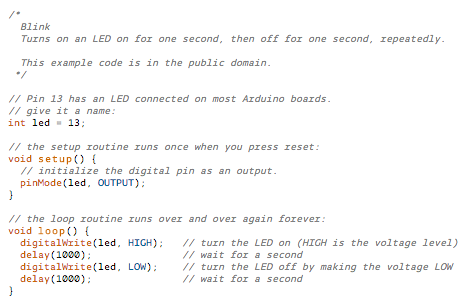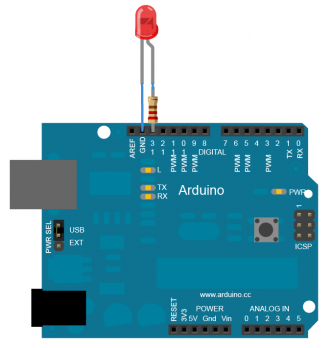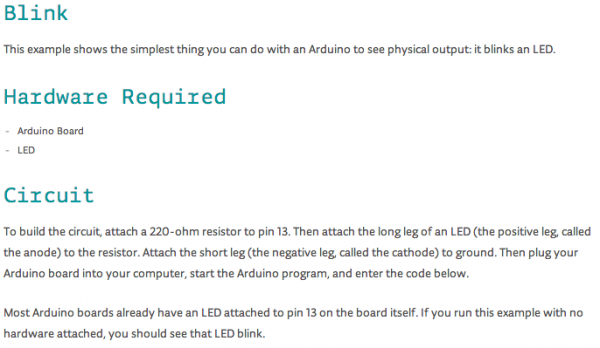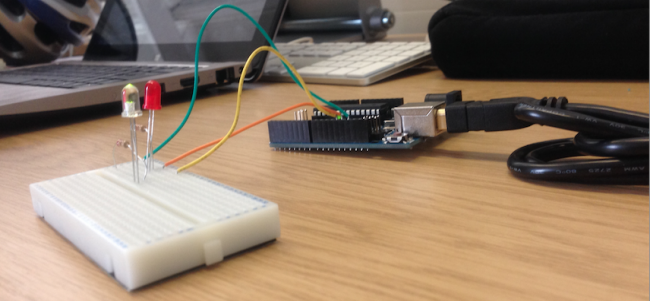REMIX CULTURE
DATA GATHERING
TYPOGRAPHY
LECTURE NOTES
FINAL PROJECT
NARRATIVE
ARDUINO
WHAT
IS
ARDUINO?
ARDUINO IS AN OPEN-SOURCE ELECTRONICS PROTOTYPING PLATFORM BASED ON FLEXIBLE, EASY-TO-USE HARDWARE AND SOFTWARE. IT'S INTENDED FOR ARTISTS, DESIGNERS, HOBBYISTS AND ANYONE INTERESTED IN CREATING INTERACTIVE OBJECTS OR ENVIRONMENTS.
(Click logo to visit source)
"
"
WORKING
WITH
ARDUINO
On the 29th of October and on the 5th of November we held two half day guest lectures with 'Rob Canning'
During these two lectures we walked through the ideology of open software and majority of its aspects and outcomes such as;
Following on from this the second lecture was a more hands on practical that allowed us to explore the world of 'Arduino'.
- 'Copy left' movement.
- Creative Commons
- gutenberg.org
- wikimwedia.org
- webmaker.org
- Raspberry pie computer
- VLC
- virtualbox.org
- hackerspaces.org
- thingiverse.com
'Rob Canning' is a composer and a network artist, and most importantly an 'Arduino' expert.
His sound and network installations have been commissioned by and located in The National Library of Ireland and The Saison Poetry Library
'Rob Canning' has been actively involved in education and collaborative new media projects including the GOTO10 collective , the Puredyne GNU/Linux operating system for artists and SPC.ORG.
ROB
CANNING
(Click here to visit 'Rob Canning's' wedpage)
"OPEN
SOURCE
MOVEMENT"
The 'Open-Source' movement is a Philosophical, Political and Physical movement of individuals who support the use of 'free'/'open' licences.
The concept within this movement is that these movements are made for anyone to use or modify, without economic or any for of discrimination.
"Open-Source" proudly promotes learning and understanding thought the and ability given to modify the software's methodology. (Code)
The difference between "Open-Source" and proprietary software is in the property rights: with traditional proprietary software the user is only granted the right to the programs functionality.
whereas "Open-Software" grants the users the full package including access to the functionality and methodology of the software.
(Click logo to visit source)
OPEN-SOURCE
SOFTWARE
AND
ARDUINO
Our first introduction to "Arduino" included looking at the foundations of its methodology.Code.
By being an Open-Source, Arduino offers examples to all users, this examples are already built codes that allow users to learn from them and most importantly modify them creating their own projects.
These examples provide help for the new beginners to the most experts with plenty of samples, from light work to robotics.
Knowing this we were encouraged to experiment with the first example: 'Blink'
'Blink; is a code formulation that instructs led lights to blink on and off. The program offers you to modify the code i.e. reduce the delay between the blinks.





This is my Arduino that i used in the lecture.
(all the equipment was supplied by the University.)
You can see that i undertook the 'Blink" example, however i took it a step further and proudly modified the code and have the Arduino command two led's.
Furthermore i added another bread board with two more led lights on them, thus i had my Arduino board control four led lights through two bread boards.
VISIT
MY
ARDUINO
PRACTICE
(click text to visit 'myarduinopractice')